Zheng Shu, Wang Xiaodong, Fujian Provincial Post and Telecommunication Planning and Design Institute
Keywords: NFV; IMS; virtualization; NFVI; VNF; MANO
1 NFV Technology Architecture
NFV (Network Functions Virtualization, network function virtualization) is a new network technology initiated by operators. It aims to carry related network functions through common hardware and virtualization technologies, thereby reducing network costs and improving service development and deployment capabilities.
According to the Network Function Virtualization White Paper released at Software Defined Networking (SDN) and OpenFlow World Congress, the goal of network function virtualization is to change the current network operation architecture model and use IT virtualization technology to integrate existing network equipment functions. Integrate into standard industrial IT equipment such as high-density servers, switches, storage and other devices. This will enable traditional network transport functions to run on different IT industry standard server hardware, and can be made to be migrated, instantiated, and distributed on demand in different locations without having to install new equipment.
The European Telecommunication Standardization Association (ETSI) has developed a reference framework for NFV so that all participants can complete relevant R&D work according to a common framework, as shown in Figure 1.
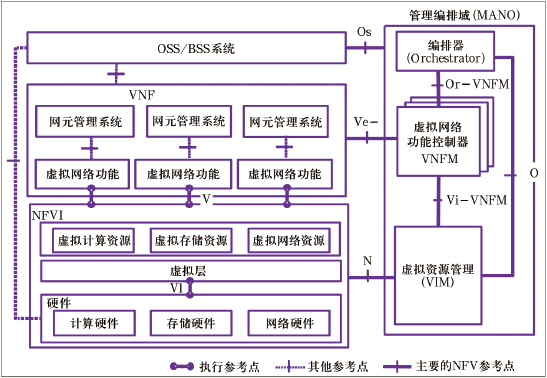
Figure 1 NFV reference architecture developed by ETSI
According to this architecture, NFV includes the three-part entity functions shown in Figure 1.
NFVI (NFV Infrastructure). Specifically, NFVI is a cloud data center that includes servers, storage hardware, hypervisors, operating systems, virtual machines, virtual switches, and network resources. The NFVI needs to virtualize physical computing/storage/switching resources into a virtual computing/storage/switching resource pool.
VNF (virtualized network function) implements the functions of traditional telecom network elements. The resources required by VNFs need to be decomposed into virtual computation/storage/exchange resources, which are carried by NFVI. The interfaces between the VNFs still use the traditional network-defined signaling interfaces (3GPP+ITU-T). The VNM service network management still uses the NE-EMS-NMS system.
MANO (Management and Orchestration), responsible for the management and orchestration of NFVI and VNF. Compared with other cloud computing organizations, MANO is an innovative architecture proposed by NFV-ISG and a technical means for implementing carrier-class virtualization.
MANO includes three entities, VIM, VNFM, and Orchestrator, to complete management of NFVI, VNF, and NS.
Orchestrator: The orchestrator is the control center of the entire MANO domain and is responsible for the unified management and orchestration of NFV-infrastructure resources and software resources. Usually, a whole set of organizer is deployed on the entire network, which can be deployed in a distributed or clustered manner to improve processing capacity and reliability.
The VNFM is responsible for managing the lifecycle of the VNF, including instantiation/upgrade/dilatation/reduction/reduction/termination. The relationship between VNFM and VNF can be 1:1 or 1:N. VNFM can manage similar VNFs and can also manage different types of VNFs.
VIM: Includes management functions and operation and maintenance functions. The management functions include asset management functions, resource pooling functions, resource management and distribution. Operation and maintenance functions include management and visualization of NFVI, root cause analysis of performance and faults from the NFVI level, collection and reporting of fault information, capacity planning, and performance statistics.
ETSI NFV ISG, while defining the virtualization of network functions, also scrutinizes the main application scenarios of network function virtualization:
(1) Scenarios for improving the automation level based on virtual service edges (such as vCPE, vSTB, etc.);
(2) Emphasize the scenario where computing capabilities enhance service control flexibility (eg vEPC, vIMS, etc.);
(3) The use of hardware commonality to improve the resource sharing and intelligent control capabilities of the scene (such as vBRAS, etc.).
2 Core Network Introduces the Benefits of NFV Technology
The existing core network network architecture is complex, and the network function and the network equipment are super-coupled. The network functions are realized through specially designed and vendor-specific equipment, which brings a lot of inconveniences.
(1) Numerous types of core network elements, hardware resources are hard to share, and performance improvement depends on hardware replacement.
(2) The introduction of new business is difficult. When operators want to deploy new services, they need to use specific hardware and software platforms. Because software and hardware are tightly coupled, the development cycle is long, costly, and cumbersome to customize.
(3) Due to the complexity of the network, the workload of planning and network maintenance is relatively large.
The introduction of NFV in the core network means that the telecom equipment is migrated from the current dedicated platform to the universal equipment. In other words, various network elements have become independent applications and can be flexibly deployed on a unified platform based on standards-based servers, storage, and switches. This way, software and hardware are decoupled, and each application can reduce virtual resources through rapid increase. To achieve the goal of rapid shrinkage and expansion, the flexibility of the network is greatly improved, as shown in Figure 2.
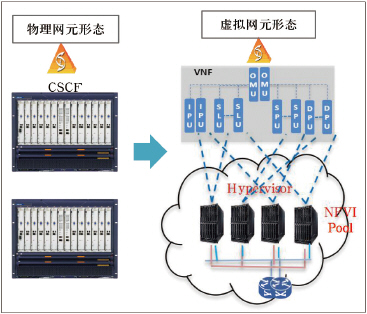
Figure 2 Morphological changes of core network elements after the introduction of NFV
Introducing NFV technology in the core network will bring many benefits to network operators:
(1) Reduce equipment costs and energy consumption of operators by integrating equipment and leveraging the economies of scale of the IT industry. At the same time, unified standards for physical networks can improve the efficiency of operation and maintenance.
(2) Virtualization of network functions Running services and testing services on a unified infrastructure will effectively ensure effective testing and integration, reduce development costs, speed up business lineup, and increase innovation capabilities.
(3) Targeted services based on geographical locations or customer bases are possible, and can quickly expand or reduce service capabilities based on specific needs. In addition, software-based remote services do not need to add new hardware devices, which also helps improve the service timeliness.
(4) The network application can realize multi-version and multi-tenancy, support different applications, users, and tenants to share a unified platform, and the support for network sharing will come naturally.
(5) Form a wide and diverse industrial chain and encourage openness. It can open up the virtual integrated device market to pure software vendors, freelance developers or researchers, encourage these developers to bring more innovations, bring new services and new revenues at very low risk.
3 NFV-based IMS core network solution
Whether IMS devices are suitable for virtualization mainly consider the following aspects: whether the device interfaces are IP-enabled; devices that are responsible for instant voice data transmission are not suitable for virtualization; devices that require complex calculations are suitable for virtualization; and there are large amounts of data storage, operations, and maintenance The equipment required is suitable for virtualization.
Based on the above aspects, it can be seen that the service plane and control plane network elements of the IMS are characterized by intensive calculation and processing, and the COTS servers have strong computational capabilities and are suitable for processing the characteristics of processes such as state transition and signaling interaction. Therefore, it is particularly suitable for performing Virtualization deployment. NEs on the user data plane require high storage reliability, require dedicated storage and software, and gradually implement storage virtualization. The network elements on the media forwarding plane still need to use dedicated hardware for forwarding because they are responsible for the instant voice data transmission. Therefore, it is recommended that the NFV deployment of the core network be gradually evolved according to the degree of ease of virtualization, as shown in Figure 3.
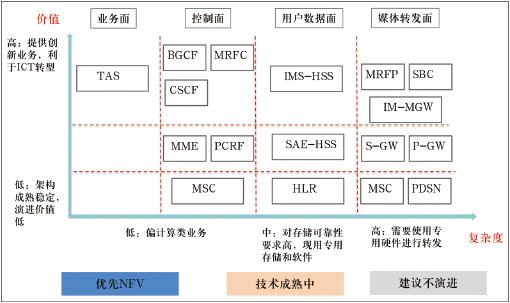
Figure 3 NFV evolution roadmap for the core network
The control plane network elements of the IMS include P-CSCF, I-CSCF, S-CSCF, MRFC, etc. The service network elements are mainly TAS. These network entities are based on the ATCA hardware architecture. IMS core network element function virtualization re-designs the system and software architecture of core network elements such as P/I/S-CSCF and TAS so that it can run on a common server platform independently of the underlying hardware devices.
The NFV-based IMS network architecture is shown in Figure 4. All network elements will be deployed on common hardware. The virtualization layer abstraction provides the upper-layer mobile core network element software application calls for normalized virtual resources.
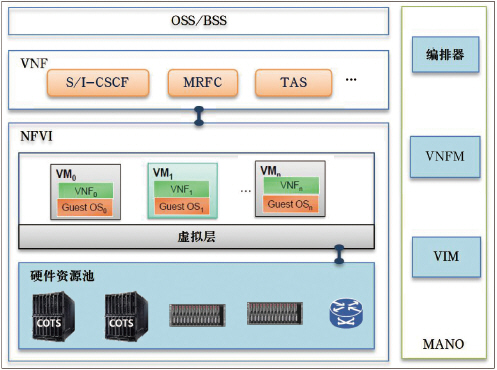
Figure 4 NFV-based IMS network architecture
After the introduction of NFV technology, the deployment of network elements changes, including the need to pre-deploy NFVI resource pools and MANO systems; each physical network element becomes a virtual network element; each network element generates the required processing resources by means of choreography, loading the network. Meta-software completes deployment; new deployment entities, including NFVO, VNFM, and VIM, complete network automation deployment and monitoring.
NFV does not change the logical architecture of the network. After the IMS network element functions are virtualized, each network element function is automatically loaded or unloaded on the common hardware platform in the form of software according to the actual needs of the user capacity change. The interfaces of the IMS network still exist, and the signaling flow remains unchanged.
Currently, all major operators have deployed IMS core networks. To ensure a smooth and secure transition of services during the evolution process, it is recommended to gradually introduce virtualized network elements in phases.
The first stage: Some network elements are virtualized and piloted.
At this stage, it is possible to use the network elements on the live network to implement hybrid networking so that traditional IMS devices and virtualized devices can run on the network and provide capabilities while keeping the separation between the traditional IMS network and the vIMS network. The vIMS provides pilot users access, while ordinary users still use traditional IMS networks. Through the relatively small-scale application, it is possible to accumulate vIMS integration, deployment, operation and maintenance, and management experience to verify the operation capabilities of vIMS. In the initial stage of construction, it is recommended to select the S-CSCF/I-CSCF and TAS network elements of the IMS core network for virtualization. New pilot SBC built-in P-CSCF and DNS functions, pilot users should be pilot SBC access. The newly added virtualized S/I-CSCF and TAS must be connected to the existing network HSS. The pilot SBC needs to connect to the existing network PCRF. The network architecture is shown in Figure 5.
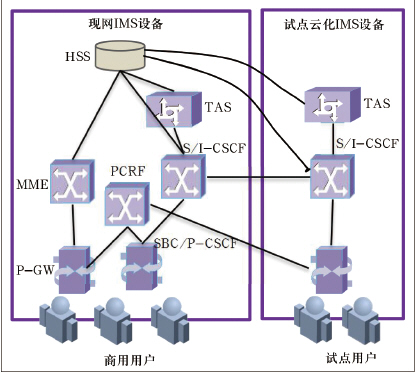
Figure 5 IMS network architecture for NFV pilots performed by some NEs
The second stage: The virtual network element gradually replaces the traditional network element to realize the full deployment of the vIMS network.
With the continuous expansion of the network scale, the vIMS network has begun to access ordinary users, traditional IMS network equipment has gradually withdrawn from service, and finally it has completed the evolution to a comprehensive NFV architecture. At the network level, the SDN architecture is used to implement separation of control and forwarding, and the control plane is centrally deployed in the data center. NFV is used to implement resource sharing and dynamic scheduling.
4 NFV Technology Challenges in Core Network Applications
The NFV technology still faces some challenges in the real commercial implementation of the core network.
4.1 Standardized protocols
The NFV proposed by ETSI regulates the architecture of network function virtualization, but the interfaces between the modules only define the functions and details of the protocol are not detailed. /
4.2 Low-level equipment performance
Virtualization is a key technology of NFV. However, the test results show that virtualization will cause the processing capacity of IMS equipment to decline, and the system delay will be too large to reach the level of traditional equipment. For example, after the NFV technology is deployed on the server, there is a performance bottleneck in the data forwarding of the I/O interface. Compared with the traditional network equipment, there will be a 30% to 40% performance loss, and it can only reach the commercial level within 10%. Therefore, the real commercial use of NFV puts higher requirements on virtualization technology and hardware processing capabilities.
4.3 Reliability
The reliability requirement of the traditional core network reaches 5 9, which is 99.999%. The virtualized core network equipment is based on general-purpose servers and its reliability is lower than that of dedicated high-performance network equipment. NFV must use virtual machine decentralization, virtual machine backup, and management system backup to improve the reliability of the virtualized system. However, the introduction of these technologies has increased the difficulty of NFV implementation, making the NFV technology too complicated.
4.4 Service Deployment Mode
The NFV deployment process differs from traditional processes in many ways. The traditional network collects hardware devices after capacity measurement, and then adjusts and adjusts the goods and then goes online. After the introduction of NFV, the hardware uses the resources in the virtual resource pool, and MANO implements service orchestration, virtual resource demand calculation and application, and completes network capacity deployment. The changes in business deployment methods have a great impact on the current equipment procurement model and operation and maintenance model. How to integrate and operate the virtualized core network is a huge challenge.
5 Concluding remarks
With the development of virtualization and cloud computing technologies, the emergence of NFV provides a good idea for solving the drawbacks of the traditional core network architecture. NFV provides a new network product environment based on virtualization technology, which promotes the convergence of IT and telecommunications industries, improves the deployment capabilities of operators' networks, reduces the cost of network deployment, and enhances operational capabilities. Although NFV still has many key technical issues to be solved in many aspects, such as technical route, hardware/platform technology, network management system, and network construction plan, the evolution of the core network to the NFV architecture will remain an important part of the future network and it is worthwhile for us to continue. In-depth study.
Air Circulation Fan ,7 Inch Oscillating Table Fan,DC Motor Air Circulation Fan,6 Stepts Wind Table Fan,With Remote Control
Foshan Shunde Josintech Electrical Appliance Technology Co.,Ltd , https://www.josintech.com